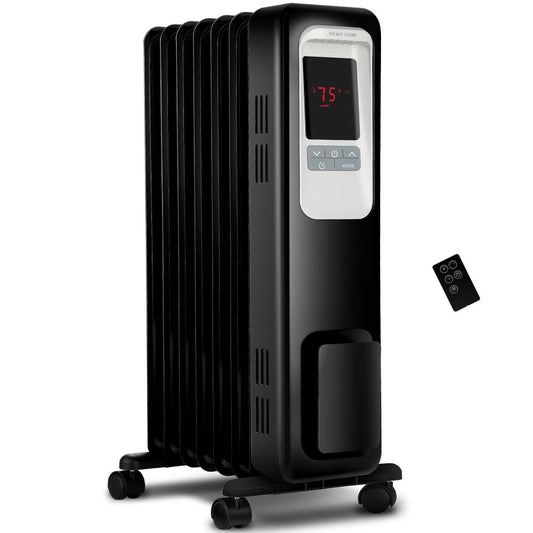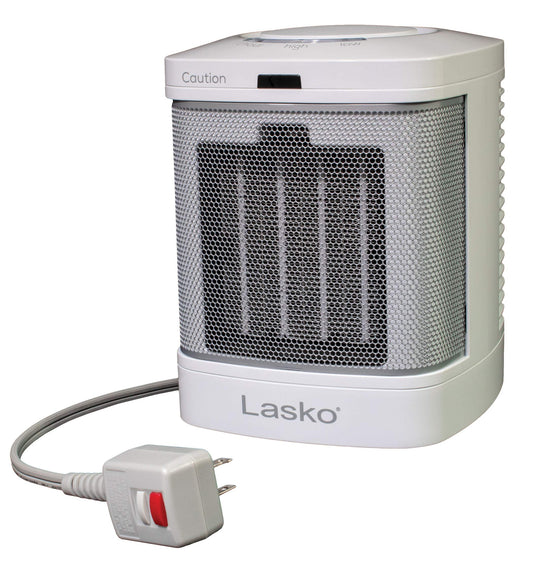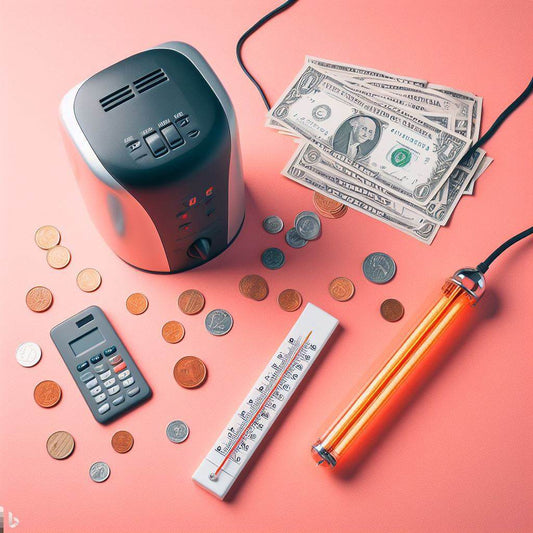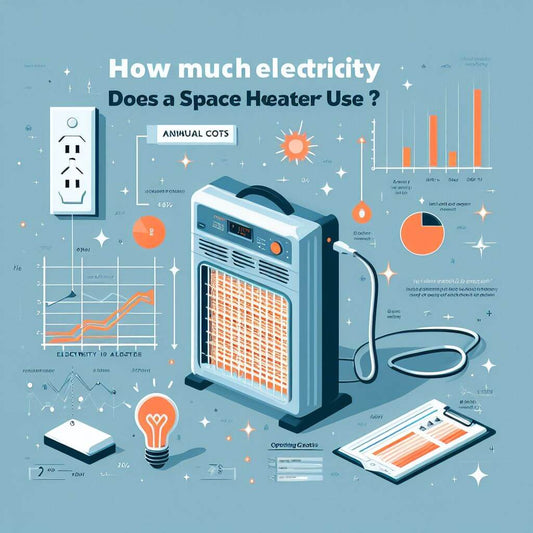Summary
Yes, space heaters use a lot of electricity and can increase your energy bill significantly. However, you can save a significant amount of money and energy by choosing the right type of heater, setting the thermostat correctly, and following some simple tips to improve the efficiency of most space heaters and your heating system.

Amazon affiliate links may earn a commission.
Do Space Heaters Use a Lot of Electricity? How much electricity does electric space heaters use?
Picture this: a chilly evening, a cozy nook, and the gentle warmth of a space heater. Space heaters are the unsung heroes of snugness, offering instant warmth in targeted areas. But, there's this lingering question: do they gulp down electricity, increasing the cost of electricity as much as parched adventurers would consume water at an oasis?
Let's break it down. Space heaters are portable, adept devices, designed to act as a heat source in compact areas. An electric heater uses electricity to produce heat. Whether you're warming your feet while enjoying a cup of cocoa or maintaining a comfortable workspace, these devices prove to be efficient in power usage as heat sources. However, their impact on electricity rates and natural gas consumption is a hot topic in the energy conversation.
Are they energy guzzlers or moderate consumers of kilowatts? Let's uncover the truths, myths, and hacks about space heater electricity usage.
Understanding the Amount of Electricity Electric Space Heater Used
Firstly, let's dive into the details of the amount of electricity that space heaters use and their power consumption. Do electric space heater heaters use a lot of electricity? It all starts with wattage – the magic number dictating how much electricity your space or electric heater craves.
Wattage measures the power consumption of a space heater. The higher the wattage of portable electric space heater, the more amount of electricity it chomps. Here's the lowdown: different types of portable electric space heaters can have their power consumed at varying wattage levels. For instance, ceramic heaters generally use 750-1500 watts, while infrared heaters can reach up to 1500-3000 watts.
But wait, there's more! Several factors tag along in this electricity dance. Wattage isn't the only player. Usage duration, room size, floor space, and how often you're cranking up the electric heaters all influence the electricity munching.
Imagine using a space heater as a foodie – its appetite (electricity usage) is influenced by factors like room size heated air used, time left on, and wattage setting. Smaller rooms need less 'food' (electricity), while cranking up the heater from low setting to max wattage creates a bigger electricity banquet.
So, are space heaters electricity gluttons? Not entirely. It's a balancing act between wattage, usage habits, and room size. Stay tuned as we crunch the numbers and reveal the secrets behind space heater electricity consumption!
Calculating Space Heater Electricity Costs Per Hour
Now, let's decode the dollars and cents behind the energy costs of running and using a space heater. It's time to talk about kilowatt-hours (kWh) and how they link to your electricity and heating bill.
Calculating the electricity cost of running a space heater involves a simple formula: multiply the wattage by the same amount of hours the heat pump used, then divide by 1000 to get kWh. That's your energy consumption magic number!
For example, if your 1500-watt space heater runs for 8 hours a day, the math wizardry goes like this: 1500 watts x 8 hours ÷ 1000 = 12 kWh per day. But wait, there's more to the story!
It's time for the curtain to rise on the utility bill cost stage. Electricity costs vary, but the average US electricity rate is around 17 centers per kWh (source). So, that trusty portable heater using 12 kWh per day from your heater would cost power bill of approximately $2.04 per day in electricity. Check your electric bill for your cost per kWh.
Stick around, as we unveil real-life scenarios of electricity and heating costs, for different space heater usage patterns. Crunching numbers on utility costs can be as eye-opening as peering into a treasure chest!
Energy-Efficient Space Heater Usage Tips
Now that we've unraveled the mysteries of space heater electricity costs, let's don our efficiency cap. How can we keep cozy without breaking the bank or the planet?
Enter the unsung heroes of energy-efficient warmth: oil-filled radiator space heaters. These champions boast a clever, efficient design that sets them apart from the other electric space heaters and heater crowd. Unlike other types of electric space heaters, that rely solely on electricity to heat the air, oil-filled radiators work on different wavelengths of infrared radiation.
They use electricity to heat the oil inside, and this oil, acting as a heat reservoir, continues to radiate warmth even an extended period after the electric heater itself is turned off. Think of it like a cozy hand-warmer retaining heat for long periods after you've put it away. Their slow, steady heat release means they cycle on and off less frequently, consuming less energy overall. These radiant wonders maintain a consistent temperature without that power-hungry, continuous cycling that other heaters often demand.
So, if you're aiming for an even more energy-efficient, longer-lasting warmth without the constant hum of a power-hungry beast, the oil-filled radiator space heater might just be your knight in shining armor.
Otherwise, always look for ENERGY STAR-certified space heaters – the knights in shining armor for efficiency. These heroes are designed to cut down on energy waste while keeping you snug as a bug in a rug. They might just be the golden ticket to cost-efficient warmth!
Another trick up our sleeves? Set the thermostat lower on your central heating system and use space heaters to provide targeted warmth in specific areas. It's like giving warm hugs to just the spaces in your house or entire home that need it!
Remember, the power switch is your ally. Turn off space heaters when they're not needed or when you're leaving the room. It's like teaching them a little energy-saving dance!
Stay tuned for more tricks up our sleeves as we journey through the land of cozy, cost-effective warmth!
Energy-Saving Tips with Space Heaters
| Tip | Description |
|---|---|
| Choose the Right Size and Type | Consider space size and heating needs when selecting a heater. Match the heater size to the space and opt for energy-efficient models like oil-filled radiators to prevent wasteful energy use. |
| Optimize Usage | Position the heater strategically, keeping doors and windows closed to prevent heat loss. Set the thermostat to a moderate temperature for efficient operation. |
| Regular Maintenance | Regularly clean the heater to ensure optimal performance. Check for any damage or malfunctions to maintain both efficiency and safety. |
| Insulate Your Home | Seal drafts around windows and doors using weather stripping or caulk to prevent heat loss. A well-insulated home helps the heater work more effectively. |
Alternative Heat Sources for Saving Energy
Ready to explore the exciting world of alternative heating systems? It's not all about space heaters; there's a whole universe of energy-saving warmth waiting to be discovered!
Let's uncover a treasure trove of alternatives: heat pumps portable electric heaters and such, radiant heat panels, and even fireplace inserts. Each option has its unique energy efficiency and cost-effectiveness.
Heat pumps, the chameleons of heating, are efficient in both warm and cool weather, but their installation costs might give you a pause for thought. Radiant heat panels offer a cozy, efficient experience, like bathing your room or entire house in the sun's warmth. And fireplace inserts? They bring a nostalgic, energy-efficient vibe to your home!
We'll be your guides, uncovering the pros and cons of each alternative and helping you choose the one that fits your warmth needs like a snug glove.
Stay tuned as we embark on this exciting adventure into the world of alternative heating options!
Conclusion
And here we are, at the end of our energy odyssey! We've journeyed for eight hours through the realm of space heaters, deciphering their electricity secrets and exploring the art of efficient warmth.
So, what have we learned? Space heaters might not be energy guzzlers if you dance the wattage tango wisely. Understanding their electricity appetite and implementing savvy strategies for portable electric space heaters can keep both your cozy corners and your wallet warm.
Remember, efficiency is the key to stay warm here. Oil-filled radiator space heaters, Energy STAR-certified space heaters, smart heating habits, and knowing when to opt for alternative heating methods – it's the triad to a cozy, cost-effective winter wonderland.
By making mindful choices about how we heat our spaces, we not only save on bills but also contribute to a greener, more sustainable world. It's a win-win!
Thanks for joining us on this energy-saving adventure. Until we meet again, keep the warmth high and the energy bills low!

















